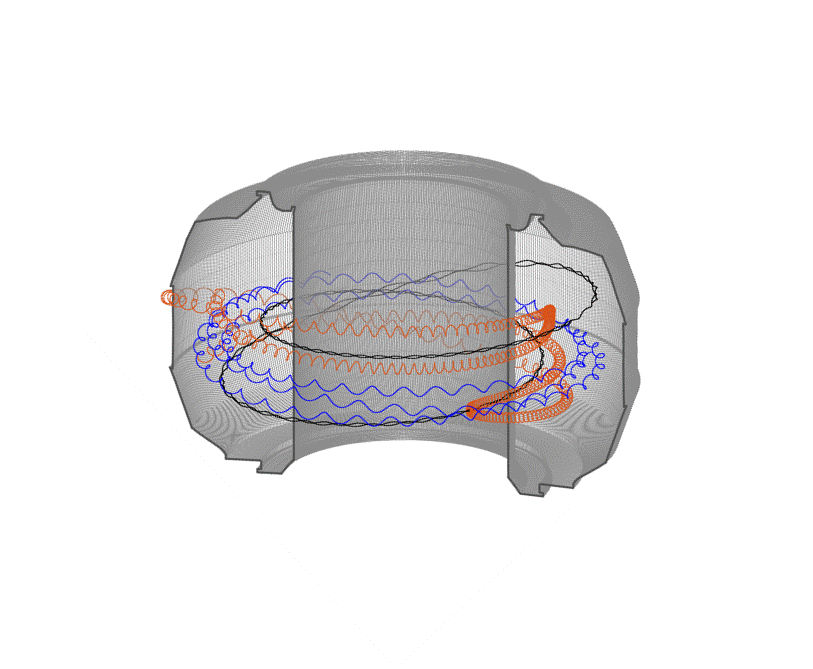
Filter News
Area of Research
- Advanced Manufacturing (5)
- Biological Systems (1)
- Biology and Environment (53)
- Clean Energy (61)
- Climate and Environmental Systems (4)
- Computational Biology (1)
- Computational Engineering (2)
- Computer Science (4)
- Energy Frontier Research Centers (1)
- Fusion and Fission (11)
- Fusion Energy (9)
- Isotope Development and Production (1)
- Isotopes (5)
- Materials (62)
- Materials for Computing (8)
- Mathematics (1)
- National Security (5)
- Neutron Science (24)
- Nuclear Science and Technology (12)
- Quantum information Science (4)
- Supercomputing (51)
News Type
News Topics
- (-) Bioenergy (39)
- (-) Biomedical (28)
- (-) Composites (20)
- (-) Environment (81)
- (-) Frontier (16)
- (-) Fusion (25)
- (-) Molten Salt (8)
- (-) Nanotechnology (38)
- (-) Quantum Science (37)
- (-) Space Exploration (13)
- 3-D Printing/Advanced Manufacturing (76)
- Advanced Reactors (23)
- Artificial Intelligence (47)
- Big Data (24)
- Biology (40)
- Biotechnology (11)
- Buildings (35)
- Chemical Sciences (43)
- Clean Water (15)
- Climate Change (46)
- Computer Science (100)
- Coronavirus (28)
- Critical Materials (23)
- Cybersecurity (20)
- Decarbonization (31)
- Education (3)
- Element Discovery (1)
- Energy Storage (74)
- Exascale Computing (11)
- Fossil Energy (2)
- Grid (36)
- High-Performance Computing (41)
- Hydropower (6)
- Irradiation (2)
- Isotopes (23)
- ITER (5)
- Machine Learning (25)
- Materials (94)
- Materials Science (86)
- Mathematics (2)
- Mercury (5)
- Microelectronics (1)
- Microscopy (27)
- National Security (21)
- Net Zero (5)
- Neutron Science (78)
- Nuclear Energy (46)
- Partnerships (30)
- Physics (28)
- Polymers (21)
- Quantum Computing (14)
- Renewable Energy (1)
- Security (12)
- Simulation (16)
- Statistics (2)
- Summit (27)
- Sustainable Energy (75)
- Transformational Challenge Reactor (4)
- Transportation (61)
Media Contacts

Scientists from Oak Ridge National Laboratory performed a corrosion test in a neutron radiation field to support the continued development of molten salt reactors.
Scientists studying a valuable, but vulnerable, species of poplar have identified the genetic mechanism responsible for the species’ inability to resist a pervasive and deadly disease. Their finding, published in the Proceedings of the National Academy of Sciences, could lead to more successful hybrid poplar varieties for increased biofuels and forestry production and protect native trees against infection.

An Oak Ridge National Laboratory-led team used a scanning transmission electron microscope to selectively position single atoms below a crystal’s surface for the first time.

Biologists from Oak Ridge National Laboratory and the Smithsonian Environmental Research Center have confirmed that microorganisms called methanogens can transform mercury into the neurotoxin methylmercury with varying efficiency across species.

Experts focused on the future of nuclear technology will gather at Oak Ridge National Laboratory for the fourth annual Molten Salt Reactor Workshop on October 3–4.

Scientists at the Department of Energy’s Oak Ridge National Laboratory induced a two-dimensional material to cannibalize itself for atomic “building blocks” from which stable structures formed. The findings, reported in Nature Communications, provide insights that ...

Qrypt, Inc., has exclusively licensed a novel cyber security technology from the Department of Energy’s Oak Ridge National Laboratory, promising a stronger defense against cyberattacks including those posed by quantum computing.

A team led by Oak Ridge National Laboratory has discovered that residents living in arid environments share a desire for water security, which can ultimately benefit entire neighborhoods. Las Vegas, Nevada’s water utility was the first utility in the United States to implement ...

An Oak Ridge National Laboratory–led team has learned how to engineer tiny pores embellished with distinct edge structures inside atomically-thin two-dimensional, or 2D, crystals. The 2D crystals are envisioned as stackable building blocks for ultrathin electronics and other advance...

Fusion scientists from Oak Ridge National Laboratory are studying the behavior of high-energy electrons when the plasma that generates nuclear fusion energy suddenly cools during a magnetic disruption. Fusion energy is created when hydrogen isotopes are heated to millions of degrees...


